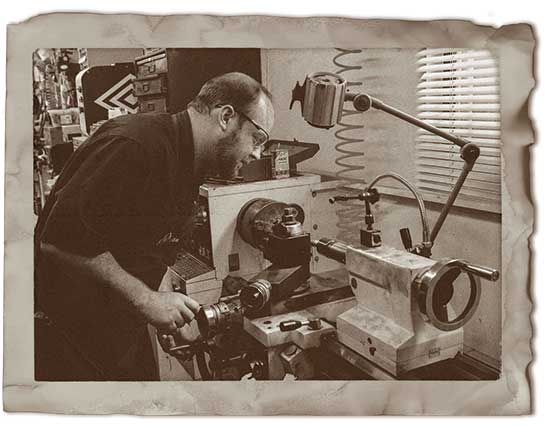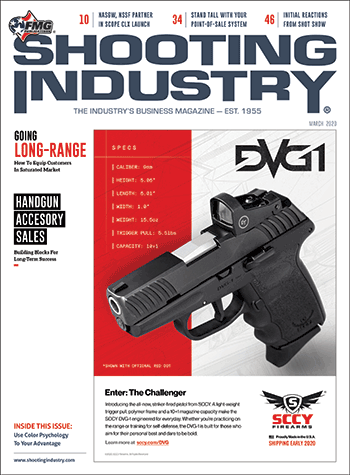Cashing In On Customer Service
A few years ago a book called In Search Of Excellence burst onto the business scene spouting a message so simplistic as to be almost laughable.
“The customer is the backbone of any business,” it stated, “and if you want to survive you better start treating him or her accordingly. Go the extra mile and the customer will heap praises on your head and reward you handsomely with dollars and loyalty.”
Perhaps, surprisingly, there were a few snickers. Why? Because the authors have struck a nerve so deep and so true that Corporate America was forced to holler, “Ouch!”
Consumerism is the battle cry of discriminating buyers who know what they want, expect to get it and won’t hesitate to go elsewhere if they don’t. Consumerism demands that you, the retailer, define your goal, not as profit, but as the satisfaction of the buyer’s need for quality and friendly, efficient service. In a word, consumerism demands marketing.
What Marketing Isn’t
Many business owners make the mistake of thinking marketing is synonymous with selling. We’re not talking about laying out the items you choose to offer and strong-arming people into buying them. That’s selling. We’re talking instead about getting to know your customer inside-out so the products in your store reflect his needs and wants so thoroughly they sell themselves. That’s marketing. We’re also talking about respecting the customer’s tastes, desires and problems even when you have to grit your teeth to do it. That’s customer service.
Consumerism demands that you, the retailer, define your goal, not as profit,
but as the satisfaction of the buyer’s need for quality and friendly, efficient service.
Actually, customer service is a broad inclusive term that incorporates a number of buyer bonuses, both primary and ancillary. Primary “perks” are the things you just about have to have in order to stay in business — credit terms for major purchases, honoring bank credit cards and staying open during convenient hours. It’s the ancillary services — on-site repairs, free calendars at Christmas for major customers and free on-range training for beginners — that make you stand out from the pack.
Unfortunately, ancillary services cost money. What you have to figure out is whether or not each one’s worth it. To help you do that, remember every customer service should have three aims: to increase the usefulness of the product or provide convenience and comfort to the customer, to attract additional customers and to increase store profits. What may be primary for one business is ancillary for another — and vice versa.
Compete With Standout Service
Ironically, big businesses today are striving to offer the familiar, comfortable “mom-and-pop” atmosphere little stores come by naturally, while all too often the little guys, in their effort to grow, fail to capitalize on their best asset. One study showed customers most prize accuracy in procedures, a clean environment to shop and product knowledge. Add courtesy to the package and their “cup runneth over.”
As a small business owner, you’re in a prime position to offer all four. You may not be able to compete with the big boys when it comes to aggressive marketing involving costly promotions, but there are things you can do to improve the quality of your customer service. A few of them include:
• Getting to know the customers by name.
• Encouraging customers to make suggestions.
• Following up big-ticket sales with a personal hand-signed thank-you card.
• Offering good customers open account credit.
• Honoring reasonable requests for returns or refunds.
• Answering phones promptly and courteously.
• Offering conveniences such as repair service, giftwrapping during the holidays, a gift register, free training and same-day mail service.
You’ll no doubt think of many more yourself — you can’t afford not to.
Conquering The Big Eight
Of course, no matter how conscientious you are, sales are sometimes going to be lost for reasons beyond your control. Sometimes products aren’t available when you need them and sometimes discount stores slash prices to the point where you can’t compete and still remain financially solvent. But many, many sales are lost every day because of basic customer service shortcomings. Here are eight primary faults:
1. The presentation isn’t geared to the customer type. The customer type? Believe it or not, yes. Every business has at least two categories of customers and many have more. In handgunning, you might typically have three — the serious competition shooter, the hunter and the casual shooter.
2. The product isn’t demonstrated. In some instances, particularly with novice shooters, it’s crucial a gun be thoroughly explained. This means a more hands-on demonstration of all processes — loading, firing and cleaning. Dealers tell me they’ll often spend as much as an hour or more breaking in a newcomer.
3. The presentation lacks feeling. You don’t have to tap dance to make a product look appealing and, in fact, you have to be careful not to come on too strong. But a lackluster here-it-is-take-it-or-leave-it approach is hardly the way to make a potential buyer part with his money.
4. The salesperson is poorly informed about the product. There’s nothing more frustrating than trying to make a purchase when you can’t get someone to answer your questions. Today’s buyers are more informed than ever, which is precisely why they have so many questions to ask.
5. The salesperson attempts to argue with the customer. If you’ve been in business at least a month, you’ve no doubt encountered the know-it-all shopper who tries to make every encounter an exercise in one-upmanship. He’ll insist he actually bagged a deer at 500 yards with his kid’s .22. Sure, it’s ridiculous, but to make an issue of it is to accomplish zero and will probably cost you the sale.
6. The salesperson neglects to point out related items. More often than not, this relates either to seller apathy or lack of product knowledge. It’s pretty hard to suggest cleaning patches and solvent are necessary adjuncts if the only thing the salesperson knows about muzzleloaders is they’re historical and they “go bang.”
7. The salesperson lacks flexibility. When the customer presents a reason why a specific item won’t meet his need as is, try to find an alternative product or a way to reasonably modify the first one. You might not succeed, but don’t lose a sale for lack of brain power.
8. After sale follow-up is poor. When a customer makes a purchase, he or she has the right to expect it to be delivered on time as promised or to have it be delivered on time in the condition promised. Also, with large purchases, it’s also reasonable to expect to be thanked for one’s patronage and encouraged to come back with any problems, questions or additional needs.
While conquering the Big Eight will do much toward improving your customer satisfaction quotient, some businesses aren’t content to stop at that. With a decided flair for the dramatic, they seize the heroic gesture and perform it like modern knights in shining armor. You could call it customer service on the grand scale.
As a small business owner, you may not be in a financial position to allow you to dabble in the impractical and improbable, but rest assured if you did it wouldn’t go unnoticed. Although I couldn’t find an extravagant enough example in the firearms field, stories abound in other businesses. A supervisor for the J.B. Robinson jewelry chain once delivered an engagement ring after hours to a remote location in the middle of a raging blizzard. And the folks at Curtis Mathes have been known to load up several models of TV sets and truck them to the home of a disabled buyer so he could choose the one he wanted.
Let’s Get “Back To The Future”
In the February issue of Time, Alan Raedels, professor of business administration, hit the proverbial nail on the head when he said: “If stores are competing with the same products at basically the same prices, then the next major battlefield is going to be service.” In a business such as firearms, it’s good advice.
Remember the film “Back To The Future?” Michael J. Fox is catapulted back in time to the 1950s. Remember the scene where the filling station attendants pop outside wearing identical dapper uniforms and broad smiles, brandishing bottles of windshield cleaner? Fox’s character can only stare in bug-eyed amazement — such service is totally out of his realm of understanding.
Experts blame today’s deplorable lack of good service on the rampant inflation of the ’70s when prices rose 87% and managers needed an area to trim the fat. With inflation currently moderate, and quality and pride still on the downhill slide, maybe it’s high time we all headed “back to the future.”
“Cashing In On Customer Service” first appeared in the September 1987 issue of Shooting Industry. It has been lightly edited for brevity and clarity. A long-form version of this article is available at www.shootingindustry.com/cashing-in-on-customer-service.





